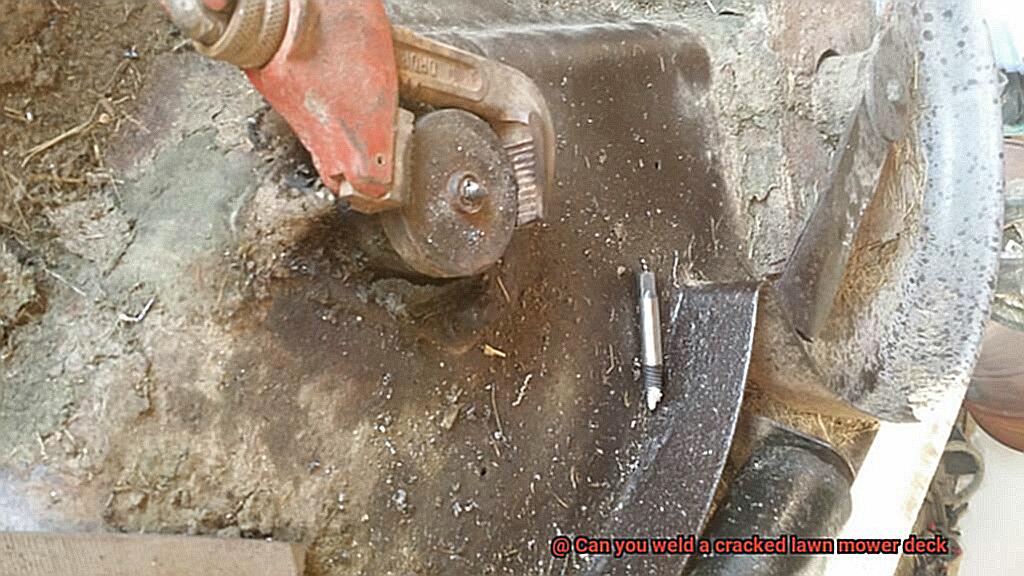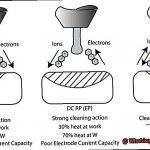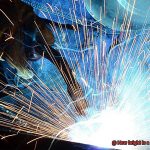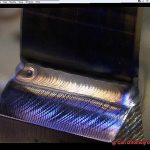Are you dealing with a cracked lawn mower deck and wondering if you can weld it back together? You’re not alone. Many homeowners find themselves in this situation and need help with the repair.
The good news is, welding a cracked lawn mower deck is possible. But there are some things to consider before starting the job. In this blog post, we’ll cover what materials and techniques work best for repairing a cracked deck, as well as safety precautions when dealing with heat-sensitive parts. We’ll also discuss the cost of welding and how to prevent future cracking.
So whether you’re looking for a quick fix or want to know more about welding a cracked lawn mower deck, this article will have all the details you need. Grab your tools and let’s get to work on how to repair a cracked lawn mower deck. With our help, you’ll have your lawnmower up and running again in no time.
What Factors Determine Whether You Can Weld a Cracked Lawn Mower Deck?
Contents
- 1 What Factors Determine Whether You Can Weld a Cracked Lawn Mower Deck?
- 2 Preparing for the Welding Process
- 3 Cleaning the Area Around the Crack
- 4 Setting Up the Welder
- 5 The Welding Process
- 6 Is Welding a Cracked Lawn Mower Deck a Permanent Fix?
- 7 Advantages of Welding a Cracked Lawn Mower Deck
- 8 Disadvantages of Welding a Cracked Lawn Mower Deck
- 9 Conclusion
Welding a cracked lawn mower deck can be a tricky task and requires careful consideration of several factors.
The extent of the damage should be taken into account, as a small crack or break can usually be welded, while extensive damage may not be feasible. Additionally, the type of material the deck is made from is important; steel decks are much easier to weld than aluminum or other materials.
The thickness of the metal also matters – if it’s too thin, heat generated during welding can cause warping or deformation.
Finally, the expertise of the welder is essential – if you don’t have experience with welding or access to necessary tools and equipment, it’s best to take your lawn mower deck to a professional for repair.
Preparing for the Welding Process
Welding a cracked lawn mower deck requires careful preparation, just like a tightrope walker needs to check their rope and balance pole. Make sure you have all the necessary welding equipment and safety gear, including a welding machine, helmet, gloves, safety glasses, and respiratory mask. Wear the protective gear to avoid electric shocks, burns, and eye damage.
Clean the surface of the lawn mower deck thoroughly with a wire brush or grinding disc to remove any rust or debris. Grind down the edges of the crack to create an ideal weld joint.
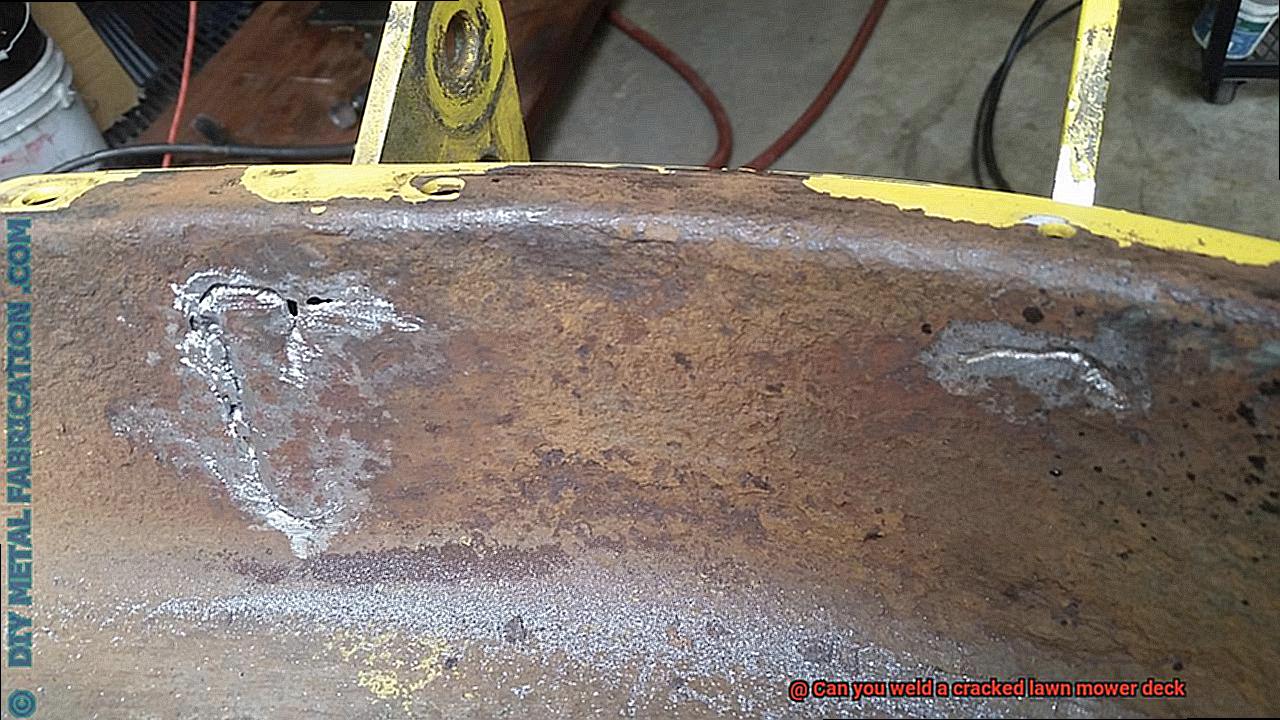
Pay attention to the thickness of steel on the mower deck when selecting the right wire and heat settings – usually 11-14 gauge steel (1/8 – 3/16 inch thick).
Before starting welding, make sure that there is nothing flammable in the surrounding area and that the lawn mower deck is secure so it won’t move during welding.
Cleaning the Area Around the Crack
A cracked lawn mower deck can be a daunting task. To ensure a successful repair, it is essential to clean the area around the crack. Dirt, debris, and oil can prevent the weld from bonding properly and may even cause further damage.
Start by sweeping away any dirt or debris with a wire brush or sandpaper. Then, degrease the area to remove any oil, grease, or dirt that may be present. Finally, grind a groove along the length of the crack for improved penetration of the weld.
Cleaning and preparing the area around the crack is key to achieving a strong and long-lasting repair.
Setting Up the Welder
If you’re looking to repair a cracked lawn mower deck, the first step is to set up your welder properly. It’s essential for a successful repair and should be treated with the same care as preparing for a performance.
Begin by selecting the right type of welder and welding rod for the job. MIG welders are typically used for lawn mower deck repairs due to their ability to create clean, quick welds. However, if you prefer using a stick welder, make sure to choose an electrode that matches the kind of steel your deck is made from.
Next, adjust the voltage and wire speed settings on your MIG welder according to the thickness of your steel deck. Usually, mower decks are made of thin steel, so make sure these settings are appropriate.
Once that’s done, it’s time to prepare the cracked area on the lawn mower deck for welding. Use a grinder or wire brush to clear away any rust, paint, or debris around the crack – this will ensure that your weld bonds securely.
Lastly, position your lawn mower deck at an angle so that you can clearly see what you’re welding. This may involve propping up the deck or using specialized clamps – just be sure it is stable and secure before starting.
Remember: proper setup is key for a successful repair.
The Welding Process
Welding is an effective way to repair a cracked lawn mower deck and extend its life, but it’s important to note that this process requires skill and experience. Before welding, it’s essential to clean the mower deck and grind away any rust or damaged metal around the crack for a smooth surface.
Two common types of welding used for lawn mower decks are MIG (Metal Inert Gas) welding and TIG (Tungsten Inert Gas) welding. MIG welding is faster and simpler, but TIG welding creates a stronger weld. Regardless of which type you use, make sure your weld penetrates deep enough into the metal to ensure its strength and durability.
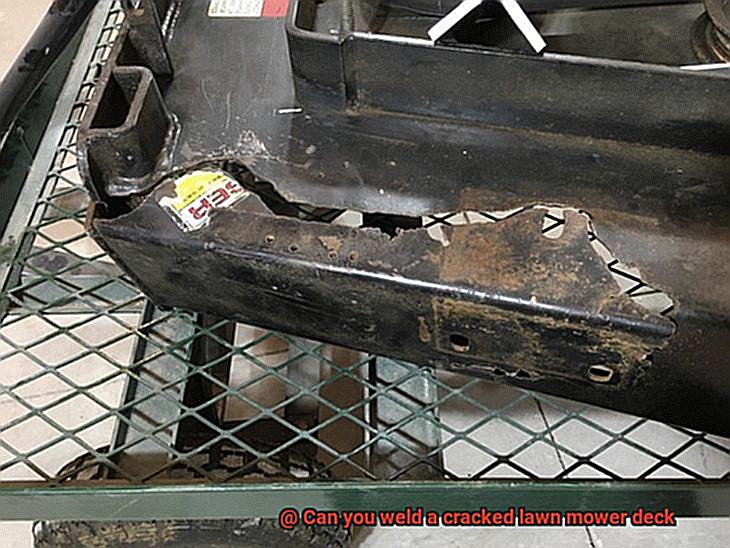
Although welding can be an effective way to repair a cracked deck, it’s not foolproof. Over time, wear and tear can weaken or break down the welded areas, so it’s important to regularly check for signs of damage in order to maximize its lifespan.
Is Welding a Cracked Lawn Mower Deck a Permanent Fix?
The answer is yes, but only if it’s done correctly. With the right preparation and quality welding job, you can restore the strength and integrity of your mower deck for years to come.
The thickness of the steel on your mower deck is an important factor in determining the success of the welding repair. If it’s too thin or brittle, it will not hold up and will likely crack again over time.
It’s also essential to prepare the surface before welding. Thoroughly cleaning and stripping any rust or rubble, as well as coating it with anti-corrosion paint or primer, will help prevent further damage. Failing to do this properly can cause rust and corrosion that weakens the weld over time.
Finally, having an experienced welder who knows how to work with metal is necessary to guarantee a successful outcome. Their expertise will ensure that the weld penetrates deep enough that it will remain intact for many years.
Advantages of Welding a Cracked Lawn Mower Deck
Welding a cracked lawn mower deck is an excellent way to save money and reduce waste. Not only is it more cost-effective than purchasing a new deck, but it’s also quicker and more environmentally friendly. Furthermore, welding can even strengthen the mower deck by fusing the steel together, creating a stronger bond.
Welding is a straightforward process that can be completed in just a few hours. Before beginning, however, it’s important to determine the severity of the crack and select the right amperage, electrode, and voltage settings for successful welding.
The weld may eventually wear out or the crack may reappear over time; however, if done properly and with proper care, it can provide a long-term fix before needing to be replaced.
Disadvantages of Welding a Cracked Lawn Mower Deck
Welding a cracked lawn mower deck may seem like an easy and cost-effective solution, but it is important to consider the potential drawbacks before proceeding. Firstly, welding can weaken the metal surrounding the crack and lead to further cracking or even breaking.
Additionally, welding can cause warping or distortion in the metal which can affect the overall stability and balance of the mower deck.
Furthermore, welds are often visible and detract from the overall appearance of the deck. The patchwork look of a welded deck might not be as desirable as a brand new or professionally repaired one.
Lastly, there is also the potential for the weld to fail over time due to corrosion or stress from mowing. This could result in costly repairs or replacements in the future.
Overall, while welding may be a quick and easy solution to repair a cracked lawn mower deck, it is important to consider all of its disadvantages before proceeding with this method.
9le00Ki3uxw” >
Conclusion
Welding a cracked lawn mower deck can be a great way to save money and minimize waste. But before you begin, it’s important to consider all the variables involved.
Clean the area around the crack, select the right welder and welding rod, and set the voltage and wire speed settings – these are all necessary steps for a successful weld.
With proper planning and quality welding, you can restore your mower deck’s strength and beauty for years to come.
That said, there are still some drawbacks to consider. Welding can weaken metal around the crack, cause warping or distortion in the metal, leave visible welds that detract from its appearance, and can fail over time due to corrosion or stress from mowing. Make sure you’re up-to-date with these potential issues before starting any repair job.
Ultimately, if you have experience with welding or have access to the right tools and equipment, you may be able to repair a cracked lawn mower deck yourself.
